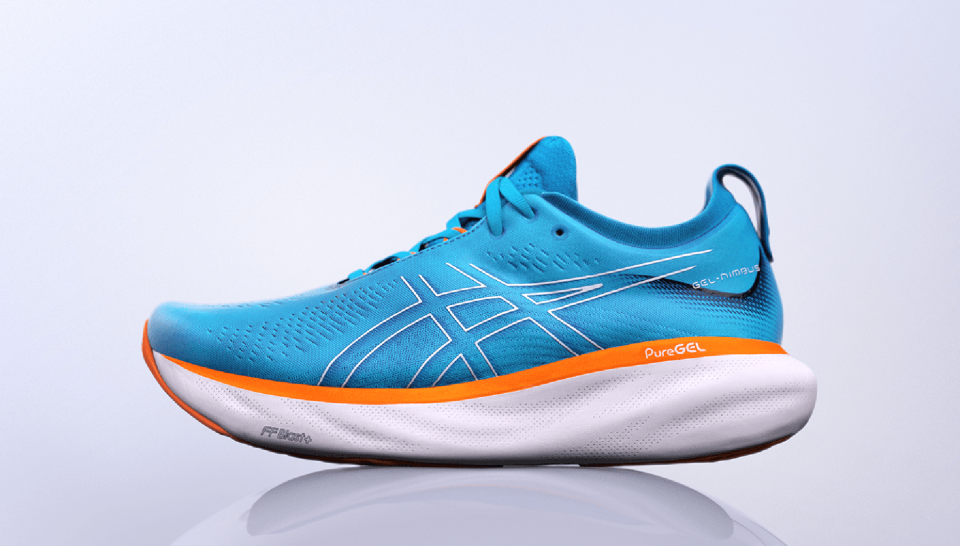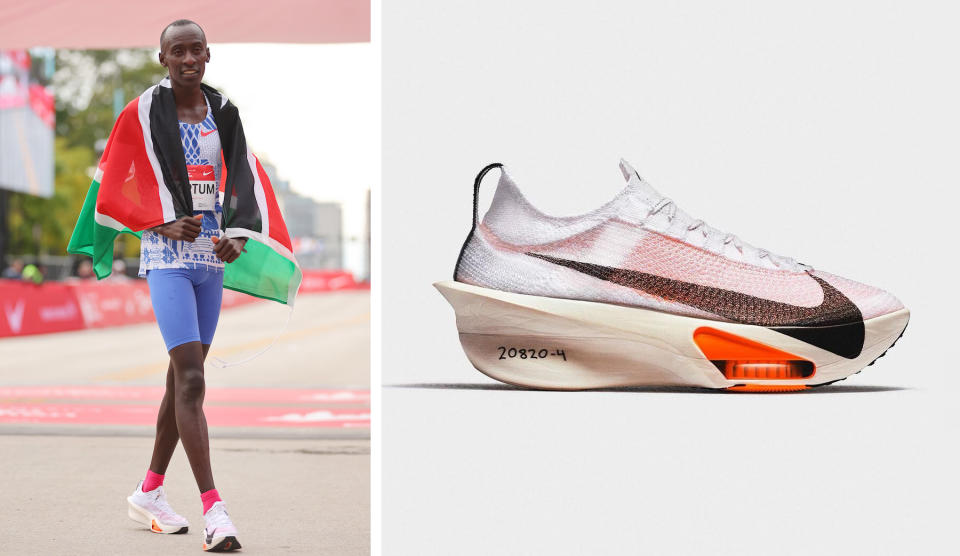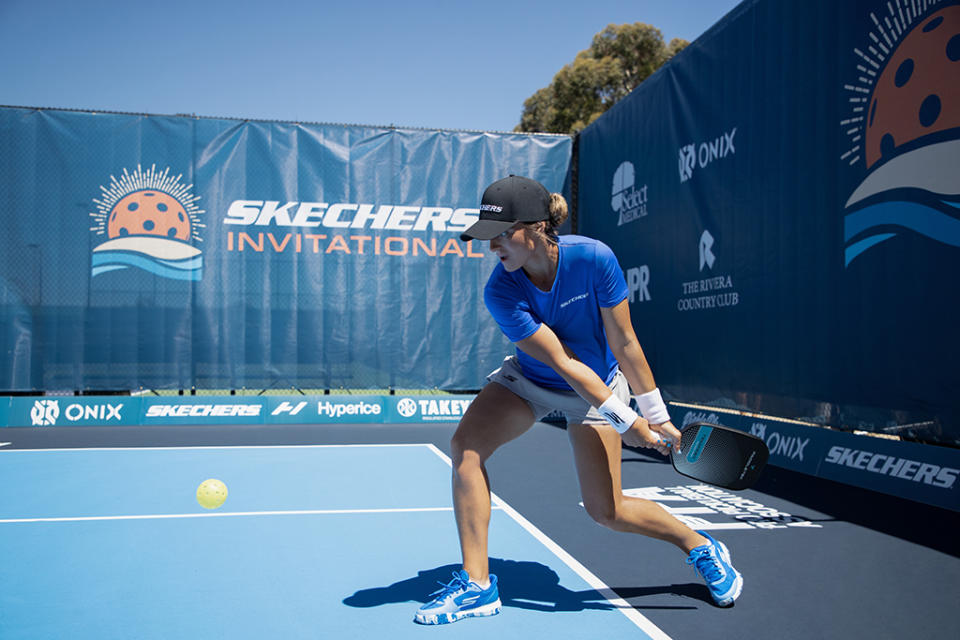Can Specialty Run Handle More Competition? Is the ‘Super Shoe’ Here to Stay? + More Burning Questions for the Running Market

More from Footwear News
Hoka Adds Trans Marathoner and Inclusivity Activist Cal Calamia to Its Athlete Ambassador Team
Asics Is Going After the No. 1 Spots in Running and Tennis - Here's How
The running market continues to be the hot spot in athletic footwear, and everyone wants a piece of it.
For instance, Nike, which had been prioritizing its direct-to-consumer channels, renewed its partnerships with non-athletic retailers Macy’s and DSW earlier this year. And Hoka — FN’s Brand of the Year and a name that has been a star in the running market — has been welcomed by mainstream and fashion retailers in recent years.
Overall, sales for adult road running shoes grew 6 percent by dollar amount from January through August, according to market insights firm Circana. That’s in part thanks to the higher price points on some of the category’s hot brands.
To that end, DSW parent company Designer Brands Inc. has said it’s investing in growth for its Topo Athletic label, which it acquired last December. And REI Co-op announced last year that it was bolstering its commitment to the running category.
Matt Powell, an advisor at Spurwink River, believes the increased competition from big-name retailers should worry the run specialty channel.
“The formula they have is a great formula, but it’s not a formula that only they can own,” he said. “If another retailer says, ‘I’m going to make a commitment to talking to real runners, to fitting them properly, to having the right brands,’ those things could shave some business away from the core running shops. Even the outdoor specialty guys, where the running business has been sensational, they represent significant competition to run specialty.”
Retailers in the run channel, however, say they’re not concerned.
Bekah Metzdorff, co-owner of Mill City Running and Saint City Running in Minnesota, said her stores invest in more than product — they create a social infrastructure that connects people. “These big entities have the capacity to [create that social infrastructure] because they have great resources, but it’s hard to connect on an individual level, to be installed in the community at that level,” she said. “I’m not worried because they can’t connect at the level that we can. That’s why run specialty will survive.”
Scott Dvorak, owner and founder of Charlotte Running Co. in North Carolina, agreed. “I’ll say what I’ve said for the last 20 years: Nobody can do it like we do it,” he said. “Unless you have true runners to talk about product, it’s not going to happen. It’s hard when you’re a big operation to have a personal connection with the local community. I welcome the competition because I know we can do it better.”
Nevertheless, there are threats to the channel. Retailers told FN that their biggest concern is the direct-to-consumer businesses of vendor partners.
Indeed, hot brands such as Hoka and On have been opening branded stores in key markets both in the U.S. and abroad. On, for instance, now has 27 brick-and-mortar doors after opening locations in London and Miami last month. Also, Asics confirmed with FN in June that it was terminating relationships with some independent retailers in the U.K.
Dvorak said some of the issues he’s faced include having to tell consumers the shoe they’re looking for is a brand’s dot-com exclusive and being charged shipping from a vendor partner when they dropship a shoe to a consumer. “Small stuff like that, it takes money out of our pockets, and we’re supposed to be your partners,” Dvorak said.
THE BREAKOUT BRANDS

This increased competition comes at a time when the market’s growth curve has tilted.
Running participation in the U.S. has been fairly consistent in recent years; however, the country’s macro-economic issues caused the running category to slow down in Q3, according to a late-October note from analysts at Wedbush Securities.
Powell said that, despite larger market pressures, this should be a good year for running, though he predicted there may be some changes in channel based on expanded distribution.
He expressed specific concern for specialty retailers in regard to Hoka and On. “They continue to expand their distribution,” he said. “When Hoka and On were relatively tight in their distribution, the business in specialty was really good.
“If you wanted to buy those brands in some towns, the only place to get them was outdoor or run specialty. As they have expanded distribution into bigger retailers — Dick’s, Foot Locker and, in particular, JD Sports — people are able to buy those shoes in more locations and maybe they don’t go back to running or outdoor specialty for their next pair,” Powell said.
The run both Hoka and On have been on in recent years has been nothing short of impressive. Last month, for instance, Hoka parent Deckers Brands reported a 27.3 percent year-over-year rise in sales for the athletic brand, which brought in $424 million in the fiscal second quarter.
Now, the question on everyone’s mind is: Can another running brand recognize the same success? Retailers are skeptical.
Casey Jermyn, owner of Bozeman Running Co. in Montana, explained, “There are a lot of options out there and only so much shelf space. You must have a compelling story and a compelling product.”
Metzdorff agreed that a brand must have “a pretty significant, unique story or aesthetic to make us think we should try another shoe in our assortment.”
Retailers did, however, pinpoint several brands that are poised to have a strong 2024, including New Balance, Brooks, Altra, Saucony and Nike. (For Jermyn, whose business is trail run-heavy, he predicted two emerging brands — NNormal and Speedland — will make a statement next year.)
And the storeowners universally recognized Asics as a brand that’s ready to make a big comeback in the market.
“Our sales [for Asics] have popped, and it feels like there’s a new momentum in the marketplace for the brand,” said Dan Fitzgerald, co-owner of Heartbreak Hill Running Co. in Boston and Chicago.
Asics announced a major leadership change last month: Koichiro Kodama has returned as president and CEO of North America, after previously serving in the role from 2019 to 2020. He’s tasked with managing the brand’s performance running, sports style, apparel and accessories and core performance sports business in the region.
“They understand the business and they’ve got incredible product right now,” said Dvorak. “That Nimbus [Gel-Nimbus 25] is one of the best shoes I’ve seen in the last 10 to 15 years. They’re firing on all cylinders.”
THE STATE OF THE ‘SUPER SHOE’

Another topic dominating conversations in running this fall has been the impact of the so-called “super shoe,” tech-loaded products that brands claim can help improve a wearer’s performance and that often come with elevated price tags.
The movement kicked off in October 2019, when running legend Eliud Kipchoge broke the 2-hour marathon distance barrier in the Nike Air Zoom Alphafly Next%. From that moment, seemingly every major player in the category delivered a shoe engineered to make runners faster — and it’s made this year’s marathon season even more exciting than usual.
In September, Tigist Assefa broke the women’s world record at the Berlin Marathon with a time of 2:11:53 in the Adizero Adios Pro Evo 1. And in October, Kelvin Kiptum set a men’s world record with a time of 2:00:35 at the 2023 Chicago Marathon in the Nike Alphafly 3, which will release in early 2024.
Retailers told FN that super shoes are a crucial element of their businesses, though they said the pace of new releases has slowed.
“We love super shoes. We love being pinnacle performance footwear,” Fitzgerald said. “There are fewer super shoes in the marketplace, but the ones that are crushing it are crushing it. In race season, performance racers pop off. They’re huge. It’s an incredibly important part of our business.”
But does it make sense for all brands in the sport to invest heavily in a super shoe? Fitzgerald doesn’t think so. “A brand needs to look at itself, its bottom line and decide where they can pour resources and do so authentically. Does your brand have racing heritage? Can you take the halo effect of a top-tier runner and turn that into actual business?” he said.
Metzdorff explained there are multiple benefits to developing a super shoe, as they serve as a laboratory for brands to experiment with new technologies and learn about what people want and what performs best. “Eventually, a lot that tech finds its way into the everyday trainers,”
she said.
Analysts, too, believe brands could benefit from an increased focus on innovation. For instance, Williams Trading analyst Sam Poser said in a late- June note that Nike needs to be more creative.
During its fiscal Q4 2023 earnings call in June, Nike CEO and president John Donahoe said the company’s focus on innovation will be its advantage in running, and it plans to reveal new footwear products ahead of the 2024 Summer Olympics in Paris.
Also during the call, Donahoe, while acknowledging run has been “a competitive battlefield” with more brands vying for market share, confirmed Nike’s running footwear grew roughly 10 percent in fiscal ’23. The exec said Nike has undergone a “recent reset” and is now prioritizing the needs of everyday runners. He noted Nike has realized success with looks for this consumer, such as the Invincible 3, a maximum cushioned road running shoe, and the Motiva for the casual runner or walker.
THE PICKLEBALL DEBATE

As specialty run retailers seek new and innovative ways to both secure new consumers and cater
to their regulars, some have discovered an opportunity with pickleball.
According to the Sports & Fitness Industry Association, pickleball is the fastest-growing sport in the U.S. Participation increased 85.7 percent in 2022 over the year prior, according to SFIA, and has climbed 158.6 percent over three years.
Christina Henderson, executive director of The Running Event (TRE), said the show conducted a survey in January of its attending run and outdoor retailers and asked about growing categories such as pickleball. Roughly 54 percent of respondents said they would either carry pickleball products or have an interest in doing so. Henderson also stated it was mostly run retailers that responded.
“If you want to find new consumers, why reject pickleball wholeheartedly? This could open a new category of people who wouldn’t otherwise come into your store,” Henderson said.
Charlotte Running Co. is one of the retailers that has embraced pickleball. Dvorak said this isn’t the first time he’s branched out beyond running — his store also stocks Nike Metcons for CrossFitters and bike accessories for triathlon athletes.
“This is what makes run specialty special. It’s like, ‘Wow, they’ve got this here. That’s cool,’” Dvorak said. “Is it the same consumer we ordinarily get? Probably not, but we serve a whole lot of runners. I’m sure some play pickleball.”
In terms of its impact on his business, though, Dvorak said pickleball is currently an add-on sale and he isn’t investing heavily in inventory. “It’s just a shoe on the wall, a men’s and women’s. If I’m lucky, I’m selling one a month,” he said.
Others have found more luck with the category. Dave Kazanjian, owner of Whirlaway Sports Center in Methuen, Mass., told FN this year that after introducing the category in summer 2021, it has grown to become the store’s No. 2 category, only second to running.
He said the key was taking the time to educate his staff. “You really have to have the knowledge,” Kazanjian said. “You’ve got to be careful, because you could be sitting on a lot of inventory if you don’t know how to sell it and you don’t bring in the category and represent it well.”
In terms of the synergy between pickleball and running, Powell questions whether the demographics line up. He noted that the typical pickleball participants — although getting younger — are mostly older and are likely not avid runners. And because the sport is relatively easy to play, without a need to be particularly strong or fast, it is the antithesis of what a running store represents.
Fitzgerald, who admitted the sport is big in the areas that Heartbreak serves, said that he’s sticking with his core category and audience. “If I wanted to sell pickleball things, I would rent a storefront and open a pickleball store,” he said. “But I don’t want to do that because we are focused on making runners feel important, powerful and primary through everything that our brand is.”
Best of Footwear News
Sign up for FN's Newsletter. For the latest news, follow us on Facebook, Twitter, and Instagram.

